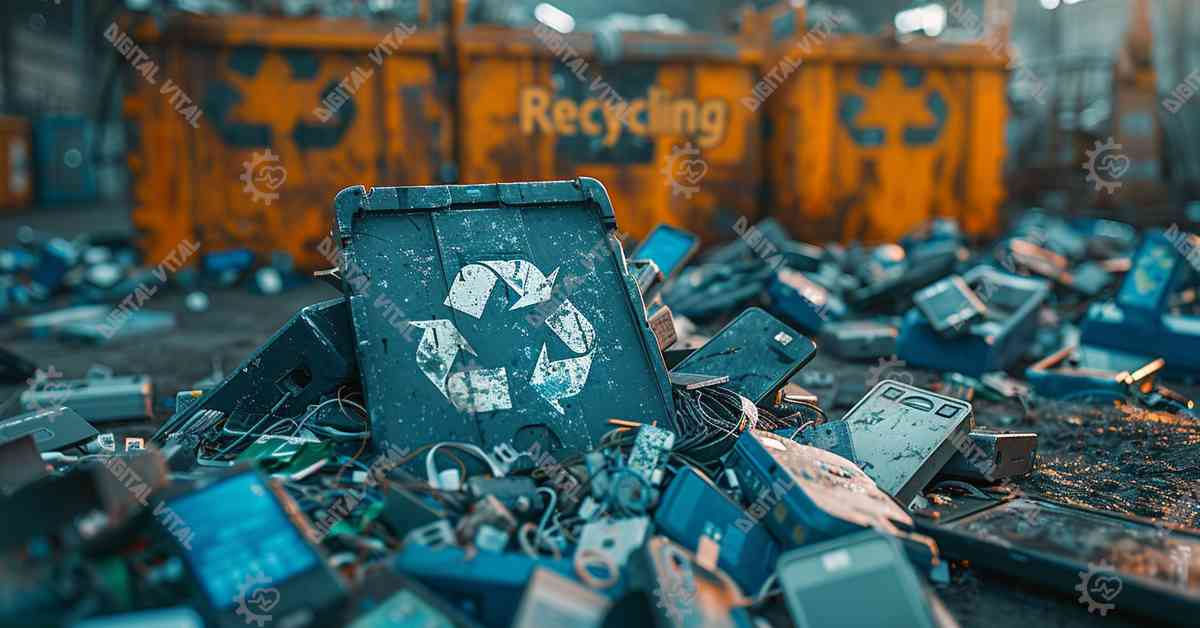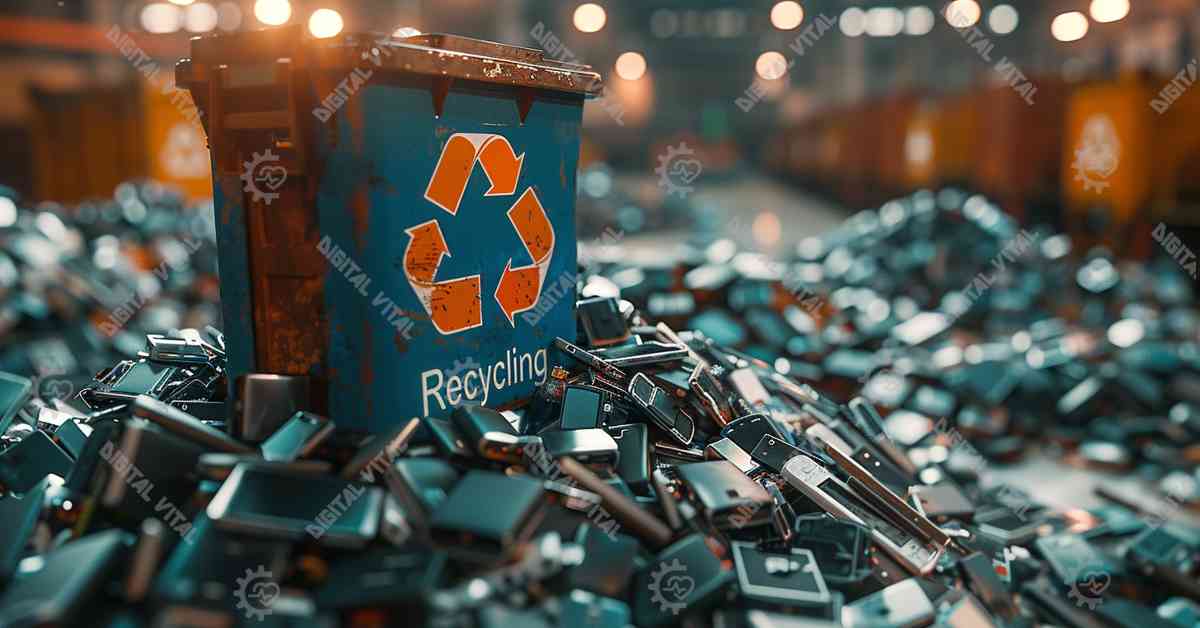Electronic garbage, commonly known as e-waste, represents one of the fastest-growing waste streams globally. The proliferation of electronic devices, shorter product life cycles, and increasing consumer demand have led to a significant increase in electronic garbage. This article delves into the environmental and health impacts of electronic garbage, current policy frameworks, and future trends in managing e-waste.
Keywords: electronic garbage, e-waste, environmental impact, recycling, waste management, hazardous materials, circular economy
Table of Contents
Introduction to Electronic Garbage
Electronic garbage encompasses discarded electronic devices and components, including computers, smartphones, televisions, and household appliances. These items often contain hazardous materials like lead, mercury, and cadmium, which can leach into the environment if not properly managed. The increasing rate of electronic consumption has exacerbated the e-waste problem, creating significant environmental and health challenges.
The Scale of the Problem
According to the Global E-waste Monitor 2020, approximately 53.6 million metric tonnes of e-waste were generated worldwide in 2019, with only 17.4% being recycled properly (Global E-waste Monitor 2020). This alarming statistic highlights the urgent need for improved e-waste management practices to mitigate the growing crisis.
Environmental and Health Impacts of Electronic Garbage
The improper disposal of electronic garbage has severe environmental and health consequences. Understanding these impacts is crucial for developing effective management strategies.

Environmental Impact
Electronic garbage contains a variety of toxic substances that can contaminate soil, water, and air. When e-waste is improperly disposed of, such as through open burning or landfilling, harmful chemicals are released into the environment, posing significant risks to ecosystems and human health. For instance, heavy metals like lead and cadmium can accumulate in the soil, disrupting plant growth and entering the food chain.
Furthermore, electronic garbage contributes to the accumulation of hazardous substances in the environment, affecting biodiversity and ecosystem stability. These toxic elements can also leach into groundwater, contaminating drinking water supplies and posing long-term health risks to human populations.
Health Risks
Exposure to hazardous materials in electronic garbage can lead to serious health issues, including respiratory problems, neurological disorders, and cancers. Informal recycling practices, often prevalent in developing countries, expose workers and nearby communities to dangerous levels of toxic substances. The World Health Organization (WHO) has highlighted the detrimental health effects of e-waste on children, who are particularly vulnerable to these toxic exposures (WHO, 2021).
In addition to direct exposure, the release of harmful chemicals into the environment can result in bioaccumulation, where toxins build up in the bodies of organisms over time, leading to chronic health conditions. This underscores the urgent need for safer disposal and recycling methods to protect both human health and the environment.
Policy Making in E-Waste Management
Effective policies and regulations are crucial for managing electronic garbage. This section examines current policy frameworks and their effectiveness in addressing the challenges of e-waste management.

Extended Producer Responsibility (EPR)
Extended Producer Responsibility (EPR) is a policy approach that holds manufacturers accountable for the entire lifecycle of their products, including end-of-life disposal. EPR encourages producers to design more sustainable products and invest in recycling infrastructure. This approach has been successfully implemented in various regions, including the European Union, where the Waste Electrical and Electronic Equipment (WEEE) Directive sets collection and recycling targets for member states (European Commission WEEE Directive).
EPR policies compel manufacturers to develop take-back programs, ensuring that electronic devices are collected and recycled responsibly. By internalizing the cost of disposal, EPR incentivizes producers to design products that are easier to recycle, use fewer hazardous materials, and have longer life spans.
International Conventions and Agreements
International conventions and agreements play a critical role in addressing the transboundary movement of electronic garbage. The Basel Convention on the Control of Transboundary Movements of Hazardous Wastes and Their Disposal aims to reduce the movement of hazardous waste between nations, particularly from developed to less developed countries (Basel Convention). This treaty helps prevent the dumping of e-waste in countries with inadequate recycling infrastructure and promotes environmentally sound management of hazardous wastes.
Additionally, the Nairobi Declaration on E-waste Management, adopted by the United Nations Environment Programme (UNEP), outlines strategic actions to address the e-waste challenge globally. It emphasizes the importance of international cooperation, capacity building, and the development of sustainable recycling technologies.
National Regulations and Initiatives
National regulations and initiatives are essential for implementing effective e-waste management practices at the local level. Various countries have developed comprehensive policies to tackle electronic garbage, often focusing on collection systems, recycling standards, and public awareness campaigns.
For instance, the United States Environmental Protection Agency (EPA) has established the Sustainable Materials Management (SMM) Electronics Challenge, which encourages electronics manufacturers and retailers to promote responsible recycling practices and design products with sustainability in mind (EPA SMM Electronics Challenge). Similarly, India’s E-waste (Management) Rules mandate e-waste collection targets for producers and emphasize the need for environmentally sound recycling practices (India’s E-waste Rules).
Challenges in Policy Implementation
Despite the existence of various policies and regulations, several challenges hinder their effective implementation. These include the lack of enforcement mechanisms, inadequate infrastructure for e-waste collection and recycling, and limited public awareness. Additionally, informal recycling practices persist in many developing countries, where economic constraints and regulatory gaps lead to unsafe handling of electronic garbage.
To overcome these challenges, governments must strengthen enforcement measures, invest in recycling infrastructure, and engage in public education campaigns to raise awareness about the importance of proper e-waste disposal. Collaboration with the private sector and non-governmental organizations can also enhance the effectiveness of policy implementation.

Future Trends in E-Waste Management
The future of e-waste management lies in innovative solutions and emerging technologies that can address the growing challenges of electronic garbage. This section explores potential future trends that hold promise for sustainable e-waste management.
Technological Innovations
Technological innovations are crucial for advancing e-waste management. Emerging technologies such as artificial intelligence (AI), blockchain, and the Internet of Things (IoT) offer new opportunities for enhancing sustainability. AI can improve the efficiency of e-waste sorting and recycling processes by automating tasks and optimizing resource recovery. For example, advanced sorting systems equipped with AI can accurately identify and separate different types of electronic components, increasing the efficiency of recycling operations.
Blockchain technology can enhance transparency and accountability in e-waste management, ensuring that electronic devices are properly recycled and hazardous materials are safely disposed of. By providing a secure and tamper-proof record of the entire lifecycle of electronic products, blockchain can help track e-waste from production to disposal, preventing illegal dumping and promoting responsible recycling practices.
IoT devices can monitor the condition of electronic products and facilitate their repair, reuse, and recycling. Smart sensors embedded in electronic devices can provide real-time data on their performance and usage, enabling predictive maintenance and extending their lifespan. Additionally, IoT-enabled recycling systems can optimize collection routes and improve the efficiency of e-waste logistics.
Circular Economy Models
The circular economy model emphasizes the importance of designing products with their end-of-life in mind, promoting reuse, repair, and recycling. By extending the lifecycle of electronic devices and reducing the demand for virgin materials, the circular economy can significantly reduce e-waste generation. Companies like Fairphone are leading the way by producing modular smartphones designed for easy repair and upgrading. This approach not only reduces e-waste but also encourages consumers to adopt more sustainable consumption habits (Fairphone).
Circular economy models also promote the concept of “urban mining,” where valuable materials are extracted from e-waste for reuse in new products. By recovering precious metals and other valuable components from discarded electronics, urban mining can reduce the need for raw material extraction and minimize the environmental impact of electronic production.
Enhancing Public Awareness and Education
Raising public awareness and education about the importance of proper e-waste disposal and recycling is crucial for driving behavioral change. Educational campaigns and initiatives can inform consumers about the environmental and health impacts of e-waste and encourage responsible behavior. Programs like the E-Stewards Certification provide guidance and certification for responsible recycling practices, helping consumers and businesses choose environmentally friendly options for e-waste disposal (E-Stewards).
Public awareness efforts should focus on promoting the benefits of recycling and the availability of e-waste collection programs. By making recycling convenient and accessible, consumers are more likely to participate in responsible disposal practices. Additionally, partnerships with schools and community organizations can help educate younger generations about the importance of e-waste management and sustainability.
Strengthening Global Partnerships
Global partnerships and collaboration are essential for addressing the complex and interconnected challenges of e-waste management. International organizations, governments, businesses, civil society, and individuals must work together to develop and implement effective e-waste management strategies. Multilateral agreements, such as the Basel Convention, provide frameworks for international cooperation on hazardous waste management, including e-waste (Basel Convention).
Collaborative efforts can enhance the sharing of best practices, technologies, and resources, enabling countries to build their capacity for effective e-waste management. Global initiatives, such as the Global E-waste Statistics Partnership, aim to improve the availability and quality of e-waste data, facilitating informed decision-making and policy development.
Conclusion
Electronic garbage is a growing global challenge that requires comprehensive and innovative
solutions. From technological advancements and policy improvements to public awareness and global partnerships, a multifaceted approach is essential for effective e-waste management. The development and enforcement of robust regulatory frameworks, combined with the adoption of advanced recycling technologies and the promotion of circular economy models, can significantly mitigate the environmental and health impacts of electronic garbage.
For small businesses, employees, job seekers, and students interested in exploring the potential of e-waste management, DigitalVital offers comprehensive services to help you navigate and succeed in this evolving landscape. Whether you need a CV review, publishing support, or specialized further education, we are here to assist you.
Visit DigitalVital Hub to learn more about our consultancy services, and stay ahead of the curve by integrating the latest advancements in e-waste management into your professional toolkit. Explore other articles on our platform to stay updated on the latest trends and insights in e-waste management and related fields.

